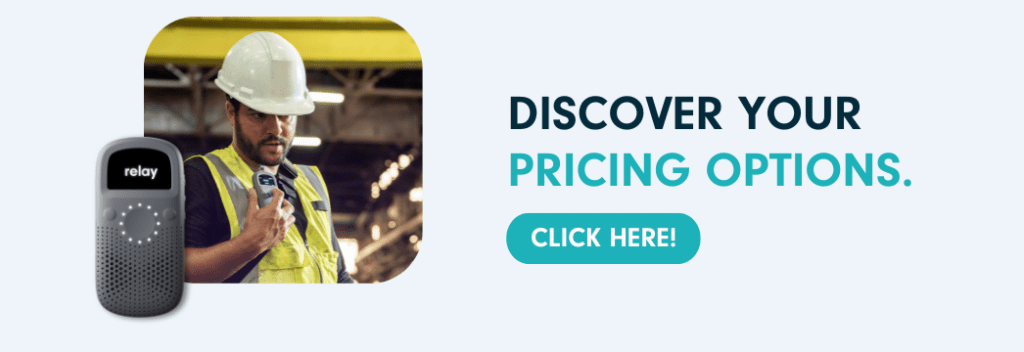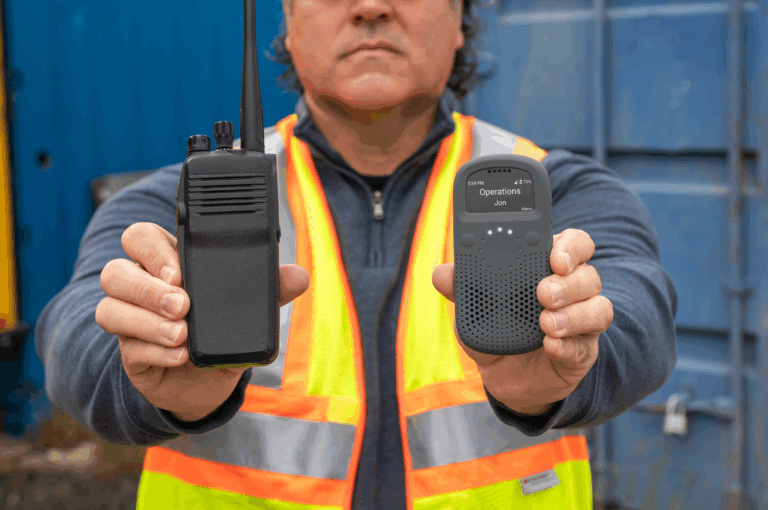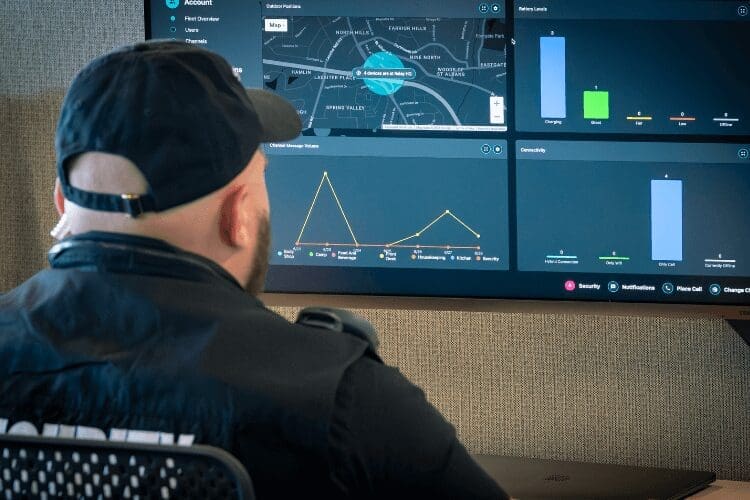Having an emergency preparedness plan is crucial for ensuring safety, minimizing damage, and enabling quick and efficient responses to various emergencies. A well-prepared plan ensures that necessary supplies are available, communication strategies are in place, and individuals know what to do in different scenarios, ultimately providing peace of mind and compliance with safety regulations.
In this guide, we’ll share general emergency preparedness tips and discuss how Relay can enhance any existing emergency plan. As many of the capabilities within Relay have not been possible before with legacy radio systems, we will share best practices and stories to illustrate the possibilities to augment your emergency preparedness plan.
Relay’s internal experts, customers, and data, as well as external experts were consulted in the creation of this guide. This aims to offer useful ideas, but we always recommend consulting with your trusted experts and adapting your plan to fit the unique needs of your organization and property.
The Rule of Redundancy in Communication Systems
In an emergency situation, clear and fast communication is the key. Every communication system can fail, but having appropriate amounts of redundancy can give you confidence to continue operations in the face of system failures. Relay devices have four built-in redundancies: connection to three different major US cell carriers and WiFi.
Earlier this year, when a telecommunications company had a nationwide outage, Relay users were not impacted because the devices automatically switched to other cell carriers or WiFi. Depending on your situation, going beyond the built in redundancy may be advisable. Major cell carriers and towers will also have built in redundancies, which can increase the resilience of your communication through Relay, but those are typically managed directly by the carriers.
Should all cell and WiFi systems fail, internet backups are also crucial. 90% of organizations are relying on cloud based applications to run their business. Any downtime will drastically impact the overall guest experience, even in non-emergency situations. A best practice is to have key internet systems connected to emergency or backup power to ensure internet continuity during power outages. Experts also recommend having a backup internet provider when possible.
Additionally, keeping some two-way radios around and maintaining landlines can add more layers of redundancy for maintaining communication in scenarios where internet, cell service, WiFi, and power are unavailable. For the most destructive scenarios, like hurricanes and fires, we recommend some level of satellite based backup solutions for internet and phone.
What You Carry with You
In emergency situations, the most effective communication devices are those that individuals already have on their person. We consistently find that our small, lightweight and discrete devices are much more likely to be carried or worn than larger bulkier radios.
The built in panic button means that everyone carrying a Relay device has the ability to raise the alarm in an emergency. Panic buttons can raise the alarm for a personal emergency situation or warn of a broader threat.
In an emergency, speed matters and having more staff able to raise the alarm improves your ability to address emergency situations before they get worse.
Emergency response also tends to need to involve a much broader group of individuals than those who might typically carry a work communication device. Relay’s app and nationwide range means that someone far from the emergency can be part of the communications.
For example, Fairfield and TownePlace Suites of Norfolk’s GM was at home without her Relay when a night shift employee had a medical emergency. The employee triggered a panic alert with their Relay device, which alerted Sara on her phone and allowed her to help resolve the incident.
Location: A New Dimension of Communication Safety
Knowing where an emergency is occurring is half the battle won. Relay’s indoor and outdoor GPS location tracking technology gives responders a significant advantage, enabling a quicker and safer resolution. This pinpoint accuracy in locating individuals and their movements in real-time means you can spend less time figuring out where someone is or who is the closest to help and more time resolving the issue.
Emergency medical services on average take 7 minutes to respond in a urban setting and 14 minutes on average in a rural setting in the US. The FCC “estimated that as many as 10,000 lives could be saved each year, if the 911 emergency dispatching system were able to reach callers just one minute faster.” In all emergency scenarios, speed matters.
One Size Does Not Fit All
Every organization, from corporate offices and hotels to casinos and education institutions, has specialized needs dictated by their unique environments and the nature of potential threats. Relay’s code-based and custom incident response capabilities allow for tailored emergency plans that synchronize seamlessly with an organization’s operating procedures.
You can read more here, but you have the ability to trigger incidents through color based codes or custom phrases and set up the work flow of who is pulled into those conversations.
For example, in a hospitality setting you can have a “code red” that represents a fire or flood emergency and it will automatically pull in all the right people. That response team assigned could be different from a “code blue”, which could represent an emergency where the police need to be involved and require different personnel to respond.
Automating these processes simplifies and reduces part of the human error potential of your response. Now you never have to wonder who needs to be part of the communication for a specific kind of incident because you pre-designated it and it happens automatically when that kind of incident is triggered.
Are you there?
One of the biggest challenges with legacy radio technology is getting a hold of the person you need to, which can have terrible consequences in an emergency. The reasons for this are varied, it could be a dead spot because you’re back of house without built-in redundancies, or because you’re offsite getting lunch and your radio has a short range. It can also be the classic “I switched channels and forgot to go back to the one I needed to”.
Regardless of the reason, Relay’s redundant connectivity improves connectivity and our incident response automatically pulls the right people into emergency channels regardless of what channel they were on. With Relay, you also have the ability to call someone directly 1×1, create as many channels as you want, and the nationwide coverage means you can easily reach someone who has gone off site.
Immediate, Ubiquitous Alerts
Emergencies are rarely scheduled. They arise suddenly and demand an immediate, all-hands-on-deck response. Relay’s broadcast capabilities ensure that, during rapidly escalating situations such as severe weather, alerts are received by all staff without delay. There are many scenarios that you might want to communicate with just your employees broadly, but not use a PA system that anyone within earshot will hear.
One Relay customer that has a 3,000+ acre property with horseback riding trails uses the broadcast ability to notify internal teams of severe weather alerts and how storms are progressing throughout the day.
Connecting with emergency services
Many of our customers are fortunate enough to have close relationships and work directly with their local emergency services, including having the ability to contact them directly on their radio frequencies. The Relay platform does not communicate over radio frequencies used by emergency services since it relies on cell and Wifi. Commonly, access to emergency services channels is limited to dispatch centers or security operations centers. This is often the case regardless of whether or not Relay is being used because those channels get busy quickly during an emergency between all the different agencies responding. Having a large amount of employees communicating on those channels often ends up being counter productive.
A best practice that many of our customers use is to make sure there is easy access to both Relay and traditional radio channels in your security operations center, or wherever comms are monitored. Typically we see security teams having a physical Relay device, the app, or our dashboard pulled up at all times, alongside a phone or traditional radio used to coordinate with emergency services. This enables your team to reach emergency services while monitoring real-time communications and locations with Relay.
Practice Makes Perfect: The Importance of Drills
It’s not enough to just have communication tools and plans – they must be wielded with proficiency and precision. Simulation drills and consistent practice create a culture of preparedness that is as essential as the means of communication themselves. Relay not only enhances these drills by allowing live communication and tracking, but it also empowers organizations to simulate and fine-tune their emergency responses to an unprecedented level of authenticity.
Furthermore, because Relay can automatically record, transcribe, and keep detailed location history records, you can evaluate your drills with a high level of accuracy of what was actually said and done. This also means that when you do have an incident and are doing an after-incident report, there is less ambiguity and more clarity on what happened, which can help for risk and compliance reasons, while enabling the organization to improve future responses.
The Limits of Technology
Technology alone cannot solve every challenge that emergencies present, but it is our hope that this guide has provided you with valuable insights on how to enhance your preparedness plans through planning, technology and creating a culture of preparedness.








